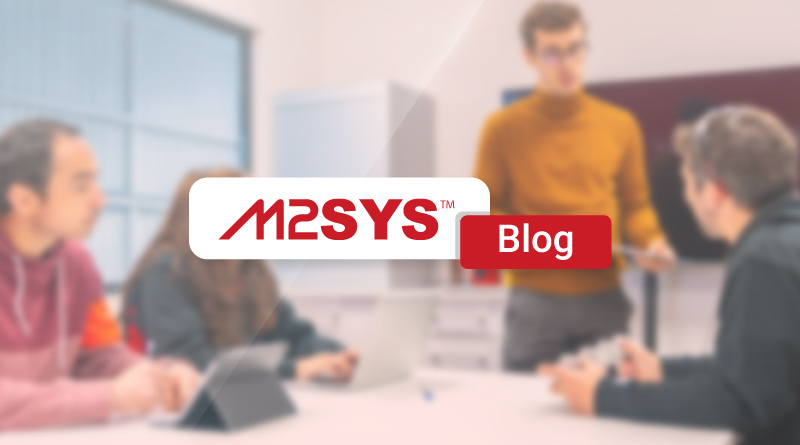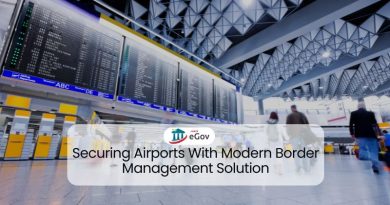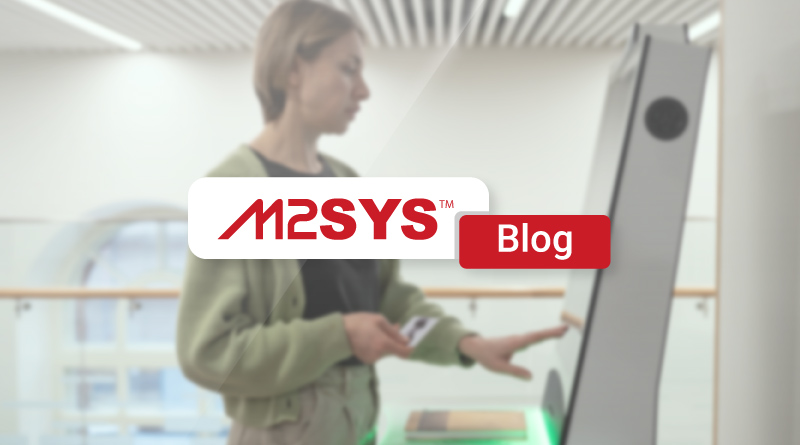Biometric Visa Processing Unlocks Immigration Digitization
Biometric visa processing revolutionizes immigration digitization by using fingerprints and facial scans to confirm identities instantly. This method reduces fraud, speeds up application reviews, and integrates seamlessly with existing systems, offering a secure and efficient solution for modern migration demands.
TL;DR
- Challenge: Traditional visa processing is slow and error-prone, struggling with high volumes and security risks.
- Solution: Biometric tools use fingerprints, facial scans, and iris patterns to quickly verify identities, reducing fraud and speeding up processing times.
- Efficiency: Custom workflows and real-time dashboards streamline operations, cutting processing times by up to 50%.
- Integration: Biometric systems integrate seamlessly with existing databases, avoiding costly overhauls and ensuring smooth data flow.
- M2SYS eGov: Offers tailored solutions for secure border control, integrating AI-driven checks and ensuring compliance with legal standards.
- Interoperability: Enhances coordination across immigration, customs, and law enforcement by sharing verified data in real time.
- Implementation: Agencies should assess current systems, pilot biometric tools, train staff, and partner with experienced providers for effective deployment.
For governments looking to modernize visa processing and enhance border security, exploring solutions like M2SYS eGov can provide the necessary tools for lasting improvements. Contact us to learn more about how we can help streamline your immigration processes.
Have you ever wondered why lines at airports stretch for hours while security risks slip through unnoticed? In today’s world of rising migration and geopolitical shifts, governments face mounting demands to handle visa applications swiftly and safely. Yet, many still rely on outdated paper methods that slow everything down and invite errors. This reality pushes agencies toward smarter tools, like Biometric Tools for immigration digitization, to revamp their systems.
What Challenges Do Governments Face in Visa Processing?
Governments deal with a flood of visa requests daily, but manual checks create bottlenecks. For instance, paper forms lead to lost documents and mismatched identities, which delay approvals and raise fraud risks. Moreover, these old systems struggle to connect with modern databases, making it hard to spot threats quickly. As a result, officers spend too much time on routine tasks, leaving little room for complex cases. And with global migration hitting record highs—over 281 million international migrants in 2020, according to the United Nations—the pressure only grows.
How Does Biometric Verification Strengthen Security?
Biometric tools change the game by using fingerprints, facial scans, and iris patterns to confirm identities right away. So, when someone applies for a visa, the system matches their biometrics against records in seconds. This method catches fake documents early and blocks unauthorized entries. Plus, it builds a digital trail for every step, which helps meet strict rules on data protection. In fact, countries like the United States have seen a drop in identity fraud after adding biometrics to their border checks.
Can Biometric Systems Speed Up Application Reviews?
Yes, and here’s why: Custom Workflows handle the repetitive work, such as verifying documents and running background checks. Therefore, officers focus on high-risk applications, cutting wait times for everyone else. For example, a study from the International Organization for Migration shows that digitized processes can reduce processing times by up to 50%. Additionally, real-time dashboards let teams monitor applications live, flagging issues instantly. This setup not only boosts speed but also keeps operations running smoothly across borders.
What About Integrating with Existing Systems?
Many agencies worry about fitting new tech into old setups, but biometric visa processing for immigration digitization tackles this head-on. It connects seamlessly with government databases and Watchlist Management, ensuring data flows without hitches. Consequently, there’s no need for costly overhauls—agencies can upgrade step by step. However, challenges like high setup costs and deployment lags often arise in these projects. That’s where platforms like M2SYS eGov come in, drawing from over 20 years of work with governments worldwide and in the United States to deliver tailored solutions.
How M2SYS eGov Addresses Real-World Pain Points
M2SYS eGov serves as a platform that governments, system integrators, and technology vendors use to build and deliver secure border control solutions. For biometric visa processing, it integrates AI-driven checks into workflows, solving integration hurdles by linking with legacy systems effortlessly. This reduces deployment delays, as agencies can roll out features quickly without disrupting daily operations. Furthermore, it cuts high costs by automating tasks that once required extra staff. On the compliance side, built-in Audit Trails ensure every action meets legal standards, while strong data safeguards protect traveler information.
Why Focus on Interoperability Across Agencies?
Immigration, customs, and law enforcement often work in silos, but biometric systems bridge these gaps. They share verified data in real time, improving coordination at air, land, and sea points. As a result, threats get identified faster, and legitimate travel flows without interruptions. M2SYS eGov enhances this by enabling customized setups that fit specific needs, based on lessons from global projects. For instance, in past U.S. initiatives, similar approaches have streamlined visa handling amid policy shifts, like those following major security events.
What Steps Should Agencies Take to Implement This?
Start by assessing current systems for weak spots, then pilot biometric tools in one area, such as airport entries. Next, train staff on the new dashboards to maximize benefits. Finally, partner with experienced providers to handle scalability and data privacy concerns. Through M2SYS eGov, agencies gain a reliable way to build these solutions, drawing on proven track records in eGovernance. This platform helps create digitized visa processes that are secure and efficient, ultimately strengthening national borders.
In the end, biometric visa processing for immigration digitization offers a clear path forward for governments aiming to balance speed with safety. By addressing core issues like costs and interoperability, it positions agencies to handle modern migration demands effectively. If your team seeks ways to modernize, exploring platforms like M2SYS eGov could provide the tools needed for lasting improvements.
Frequently Asked Questions
- Why are visa lines so long at airports?
Visa lines often get long due to outdated paper-based processing systems that slow down approvals and introduce errors. For more insight into how these issues are being tackled, check this article on Biometric Tools for border control. - How does biometric verification improve visa processing security?
Biometric verification strengthens security by using fingerprints, facial recognition, and iris scans to confirm identities instantly. Learn more about this technology here. - Can biometric systems help speed up visa application reviews?
Yes, by automating repetitive tasks and allowing officers to focus on high-risk applications. More details can be found in the Custom Workflows article. - Are there challenges in integrating biometric systems with existing setups?
Integration challenges do exist, but systems like M2SYS eGov provide seamless connections with current databases and features like Watchlist Management. - What role does interoperability play in border security?
Interoperability ensures that immigration, customs, and law enforcement can work together seamlessly, which enhances security. Read about the benefits of seamless data sharing in Watchlist Management.











